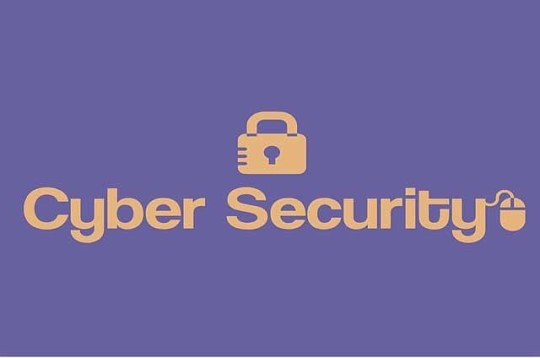#CyberVulnerabilities
Explore tagged Tumblr posts
Text
Exposed: The Shocking Cybersecurity Challenges Plaguing Healthcare IT

The healthcare sector is at a crossroads in the current digital era due to both unprecedented cybersecurity threats and technological advancements. Hospitals and other healthcare facilities are more susceptible to malicious attacks as a result of their growing reliance on digital technologies to manage patient records and optimize operations. In this blog post, we examine the severe cybersecurity problems that healthcare IT must solve and the reasons that they must be addressed immediately.
The Growing Threat Landscape
Cyberattacks on healthcare institutions are a harsh reality, not just a theoretical risk. The ramifications of these events can be disastrous, ranging from ransomware attacks that stop hospitals from operating to data breaches that expose private patient information. These attacks have become more frequent and sophisticated in recent years, revealing serious weaknesses in antiquated IT infrastructures and insufficient security measures.
Unique Vulnerabilities in Healthcare IT
Healthcare IT, in contrast to other industries, has particular vulnerabilities that make the risk environment worse. The massive amount of sensitive data kept in electronic health records (EHRs) is one of the main causes for concern. These records are highly sought after by cybercriminals who want to use or sell the financial and personal health information they contain on the dark web.
Furthermore, attackers have multiple entry points due to the interconnectedness of healthcare systems, which involve multiple devices and networks sharing information. Hospital networks are seeing an increase in the connectivity of medical devices, including MRI machines and infusion pumps, to enable real-time data collection and monitoring. Although this connectivity improves operational effectiveness and patient care, if these devices are not adequately secured, it also poses new cybersecurity risks.
Compliance and Regulatory Challenges
Healthcare businesses have to juggle a complicated web of laws and rules to ensure patient confidentiality and data security. Tight guidelines are in place to protect patient data, such as the Health Insurance Portability and Accountability Act (HIPAA). For IT departments, however, who are already overburdened with day-to-day operational demands, attaining compliance can be an overwhelming undertaking.
Mitigating the Risks
Addressing cybersecurity challenges in healthcare IT requires a multifaceted approach. First and foremost, healthcare organizations must prioritize cybersecurity awareness and education among staff at all levels. Training programs can empower employees to recognize phishing attempts, avoid malware infections, and follow best practices for safeguarding sensitive information.
Furthermore, implementing robust cybersecurity measures, such as encryption protocols, multi-factor authentication, and regular security audits, is crucial for fortifying defenses against potential threats. Investing in advanced threat detection technologies and establishing incident response plans can also help mitigate the impact of cyberattacks and minimize downtime during recovery efforts.
Looking Ahead
As the healthcare industry continues to evolve, so too must its approach to cybersecurity. Proactive measures, including ongoing risk assessments and collaboration with cybersecurity experts, are essential for staying ahead of emerging threats. By prioritizing cybersecurity as a fundamental component of healthcare IT strategy, organizations can safeguard patient data, maintain operational continuity, and uphold the trust of the communities they serve.
In conclusion, while the cybersecurity challenges facing healthcare IT may seem daunting, they are not insurmountable. By recognizing the unique vulnerabilities, adhering to regulatory requirements, and implementing robust security measures, healthcare organizations can strengthen their defenses and protect against potential threats. Together, we can ensure that patient information remains secure and healthcare systems remain resilient in the face of evolving cybersecurity risks.
#Cybersecurity#HealthcareIT#DataSecurity#HealthTech#ITSecurity#CyberThreats#HealthData#CyberAttacks#PatientPrivacy#HealthcareSecurity#DigitalHealth#SecurityChallenges#MedicalData#PrivacyProtection#HealthITRisks#CyberVulnerabilities#SecureHealthcare#HealthDataProtection#InformationSecurity#HealthcareBreach
0 notes
Text
Cybersecurity blind spot: AI’s inherent vulnerabilities
Cybersecurity blind spot: AI’s inherent vulnerabilities
Cybersecurity is commonly regarded as the biggest strategic challenge confronting the United States. Recent headlines only confirm this trend, as every day seems to bring with it the announcement of a new vulnerability, hack or breach. Click here to view original webpage at gcn.com #AI #ArtificialIntelligence #Cybersecurity #CyberVulnerabilities #SoftwareSecurity #ZeroTrust #ZeroTrustSecurity…
View On WordPress
0 notes
Text
Tweet from Senator Angus King (@SenAngusKing)
Senator Angus King (@SenAngusKing) Tweeted:
I took a page out of my friend @StephenKing’s book to share a nightmare with my colleagues in @EPWCmte. America’s cybervulnerabilities – especially for our water system – could lead to catastrophe if left unaddressed; we need to improve our cybersecurity, now. https://t.co/k23NcFqipX https://twitter.com/SenAngusKing/status/1417883624272273419?s=20
0 notes
Photo

Cyber security through encryption. http://www.top5life.com/cyber-security-encryption/#cybersecurity, #networksecurity, #encryption, #datasecurity, #digitalassets, #cybervulnerability #PrivNote #BoxCryptor #encrypt #cybercrime #technology #digitalization #digitalassets #Top5Life #aspectsoflife #onlinemagazine #cybersecuritythroughencryption #encryptyourdatanow #encryptsmartphones #encryptdesktop #Top5Lifetechnology
#cybersecurity#privnote#cybercrime#networksecurity#encrypt#encryptdesktop#datasecurity#cybervulnerability#top5lifetechnology#digitalassets#boxcryptor#technology#digitalization#aspectsoflife#top5life#cybersecuritythroughencryption#encryptyourdatanow#encryption#encryptsmartphones#onlinemagazine
0 notes
Text
Quite a hit to DJI drones and DJI products as a whole by the #USArmy. #CyberVulnerabilities http://pic.twitter.com/fzSjP7pDvW
— NickZ (@nickz) August 8, 2017
via Twitter https://twitter.com/nickz August 07, 2017 at 11:02PM
0 notes